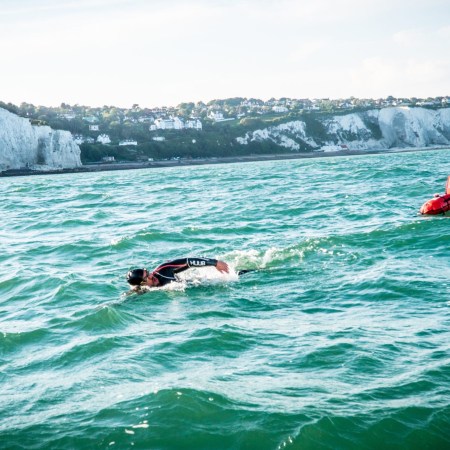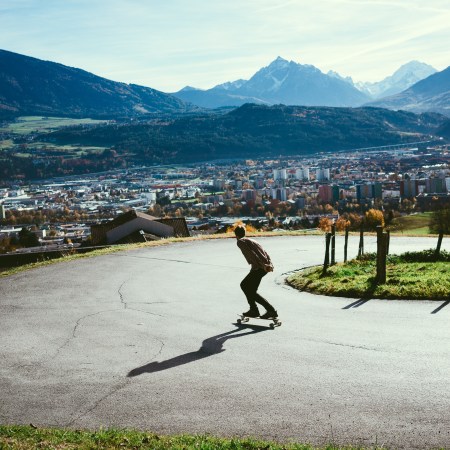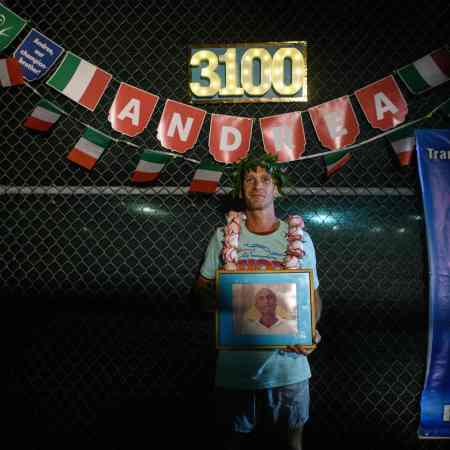Thru-hiking has a weight-loss problem.
We don’t talk about it enough, but why should we, when completing 2,190 grueling miles (the length of the Appalachian Trail, for instance) in a matter of months is such a resounding physical achievement?
The reality, though, is that of the some 3,000 men and women who attempt the A.T. each year, an overwhelming majority of them will lose weight they can’t afford to lose. And as a hiker named Julia Sheehan conveyed to The Trek for an article two years ago, this weight loss can get out of control well before people reach their final test of Mt. Katahdin, in Maine. “Most men had lost 20-40 lbs by the time they reached Harpers Ferry,” she reported. “Meanwhile, most women had lost 0-15 lbs by then. It was common for non-thru-hikers to ask how much weight we had lost.”
Harpers Ferry, for those who need a refresher, is in West Virginia. That’s nearly 700 miles (and over two months, depending on your pace), from the northern terminus of the trail. Who can possibly handle such a task, braving elements and elevation, after losing a fifth or more of their bodyweight?
But the extreme weight loss that dogs thru-hiking is why many hikers have to forfeit their adventure, or finish it looking emaciated. For some, believe it or not, the latter is actually a draw. In a recent essay for Outside Online, Rebecca Booroojian, a writer who successfully finished the A.T. in 2017, explains that weight loss is openly discussed on the trail. One man she walked with sought out scales at pitstops along the route, hoping to see his number go down. And it’s become customary on Instagram to post “before and after” slides upon completing the trip.
Booroojian dropped 30 pounds by Vermont, bringing her down to just 98 pounds. She remembers her body throwing up seemingly at random, and despite exercising for hours every single day, feeling that her muscles were “nonexistent.” She writes: “The dramatic physical change wasn’t fun or interesting, just stressful and detrimental to my main goal. I never took an after picture.”
Is there a healthy way around the issue? Technically, yes. Thru-hikers have to start eating more. But out on the trail, that’s a tall, compliated order.
Consider these calculations, enumerated in a different piece by The Trek: “An average male hiker, walking at an average speed, carrying between 21-42 pounds, doing a 15-mile day at 2.75 mph would require 689 calories/hour x 5.45 hours to equal 3,758.18 calories burned. That’s on top of the hiker’s basal metabolic rate (BMR) — the amount of calories burned sitting completely still for a day.” An average BMR is 2163 calories, which means a male hiker has to eat a total of 5,921 calories to keep himself from losing weight.
For a bit of perspective here, that equals 25 Clif Bars. Every single day. It’s difficult enough for thru-hikers to carry that much food, let alone eat it. Obviously, thru-hikers don’t solely eat energy bars, but they do predominantly rely on processed or portable foods (hot dogs, rice, ramen, slices of cheese, peanut butter, candy), and eating massive quantities of any one of those is destined to upset your stomach — especially when you’re pairing that eating with 15 miles of exercise and shitty sleep.
Plus, on the days that thru-hikers do reach that threshold of 6,000-ish calories, they tend to blow right past it, into Michael Phelps territory, by eating at one of those trail-side, all-you-can-eat joints, or taking a trip to the Golden Arches. These sorts of binges can’t adequately account for the days where they didn’t get enough, and likely lead to even more weight fluctuations.
In the end, thru-hiking is accepting that your body isn’t just going to suffer scratches, sunburns and bruises. It’s likely going to emerge at the end of the trail a shell of its former self. This shouldn’t take away at all from the physical accomplishment. But it’s a material truth that deserves more acknowledgment from those in and outside of the sport.
Thanks for reading InsideHook. Sign up for our daily newsletter and be in the know.


















